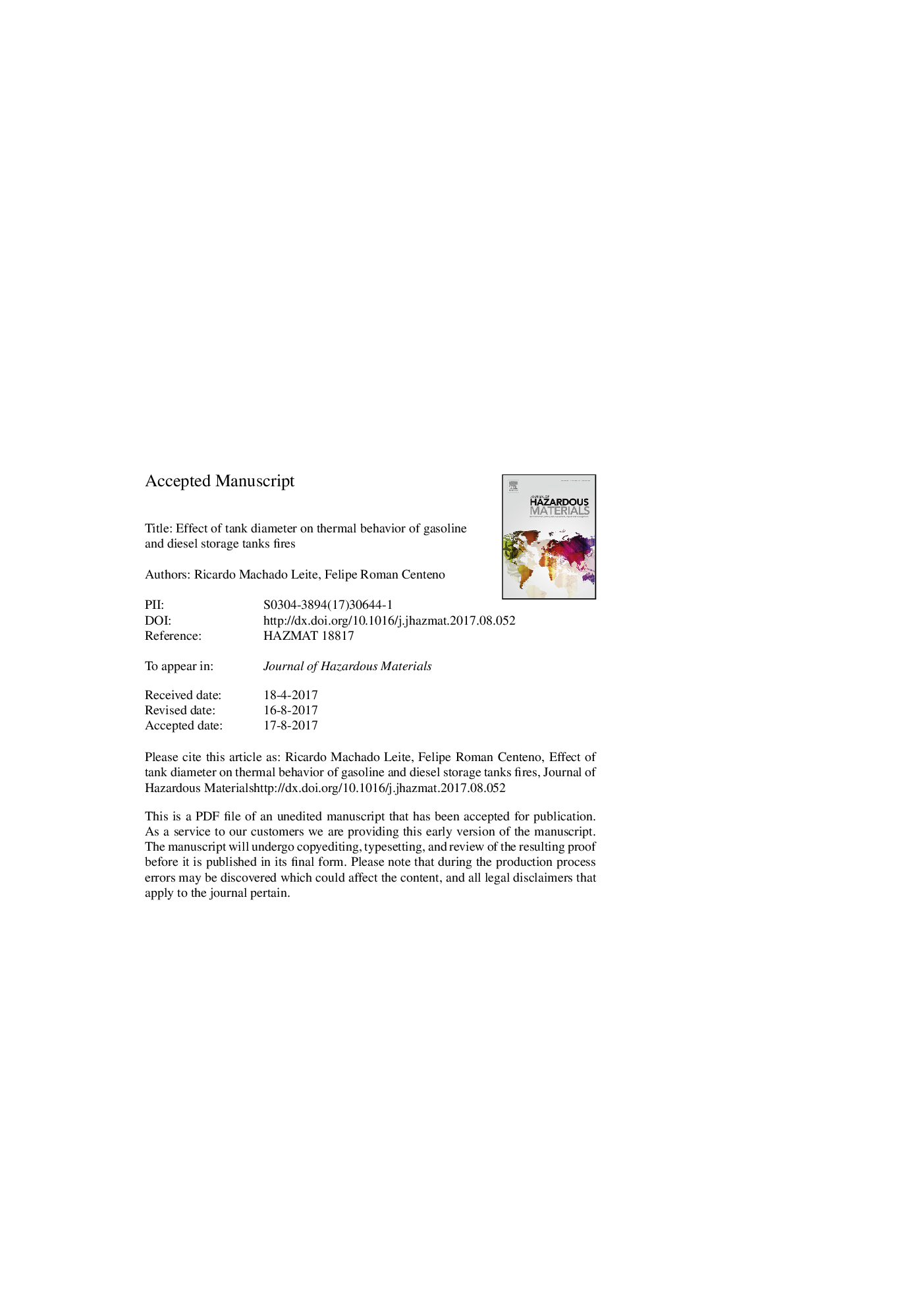| Article ID | Journal | Published Year | Pages | File Type |
|---|---|---|---|---|
| 4979113 | Journal of Hazardous Materials | 2018 | 22 Pages |
Abstract
Studies on fire behavior are extremely important as they contribute in a firefighting situation or even to avoid such hazard. Experimental studies of fire in real scale are unfeasible, implying that reduced-scale experiments must be performed, and results extrapolated to the range of interest. This research aims to experimentally study the fire behavior in tanks of 0.04Â m, 0.20Â m, 0.40Â m, 0.80Â m and 4.28Â m diameter, burning regular gasoline or diesel oil S-500. The following parameters were here obtained: burning rates, burning velocities, heat release rates, flame heights, and temperature distributions adjacent to the tank. Such parameters were obtained for each tank diameter with the purpose of correlating the results and understanding the relationship of each parameter for the different geometrical scale of the tanks. Asymptotic results for larger tanks were found as (regular gasoline and diesel oil Sâ500, respectively): burning rates 0.050Â kg/(m2Â s) and 0.031Â kg/(m2Â s), burning velocities 4.0Â mm/min and 2.5Â mm/min, heat release rates per unit area 2200Â kW/m2 and 1500Â kW/m2, normalized averaged flame heights (Hi/D, where Hi is the average flame height, D is the tank diameter) 0.9 and 0.8. Maximum temperatures for gasoline pools were higher than for diesel oil pools, and temperature gradients close to the tanks were also higher for the former fuel. The behavior of the maximum temperature was correlated as a function of the tank diameter, the heat release rate of each fuel and the dimensionless distance from the tank.
Keywords
Related Topics
Physical Sciences and Engineering
Chemical Engineering
Chemical Health and Safety
Authors
Ricardo Machado Leite, Felipe Roman Centeno,
